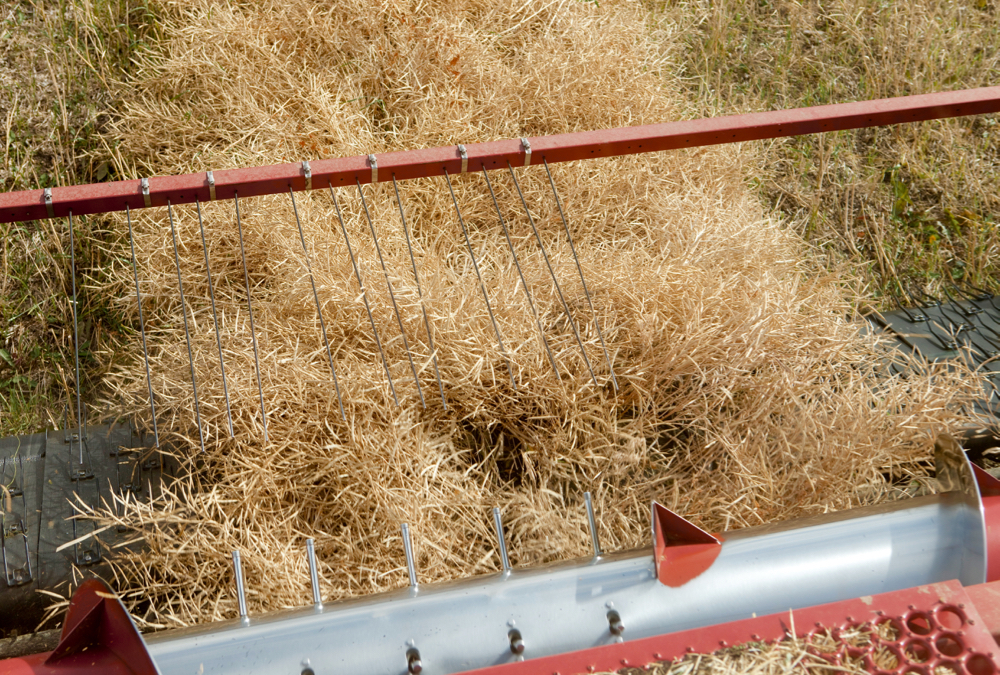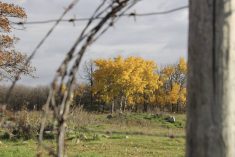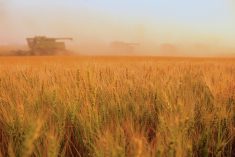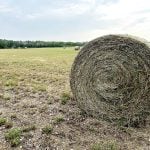CNS Canada — Snow and wet weather through a large swath of northern and central Alberta are causing havoc for farmers and will likely put more feed grains into the market.
But normal harvest price discounts are still not as great as expected, said Susanne Leclerc of Market Master Ltd. in Edmonton.
Feed grain prices have declined somewhat, she said, but not as much as what is normally seen this time of year, when new-crop harvest generally drives down prices. Usually, she said, they’ll see feed grain prices slide 40-50 cents from August to October, but this year the price drop is just 10-15 cents.
Read Also

Alberta harvest wrapping up: report
Harvest operations advanced to 96 per cent complete in Alberta as of Oct. 7, with only a few late-seeded cereal and canola fields remaining, according to the latest provincial crop report.
The delayed harvest caused by recent storms may force many buyers, who had been holding off making feed purchases, to buy at price premiums, she said. Buyers had hoped to cover their needs by picking up lower-cost feed during the cheaper harvest season, but will now be forced to make purchases to get through September.
Many farmers across northern areas and in the Peace River district were expecting good-quality crops, but with the recent snow and wet conditions, Leclerc expects a lot of crops will be downgraded, pushing more feed grains onto the market.
“We are starting to see some of the pricing on the feed wheat starting to soften as buyers are anticipating this weather will affect the grading of wheat,” she said.
Prices have moved about 50 cents on the weather, she said. Feed wheat last week was selling for about $7 per bushel but this week that has dropped to about $6.50 as more supply is anticipated.
Heavy precipitation and snow on Wednesday covered a region in Alberta from Sylvan Lake, near the Rocky Mountains, north to High Level and east through Morinville, Edmonton and Vegreville. Leclerc said the system petered out near Lloydminster and turned into rain.
Environment Canada reported five cm of snow and 12.4 mm of rain at Edmonton International Airport on Wednesday; the Grande Prairie Airport received 10.6 cm of snow.
Frost has also been reported at many weather stations across the Peace region and around Edmonton and northeastern regions.
John MacArthur, who raises cattle and grows feed in the Peace region near Fairview, Alta., said his farm was spared from the worst of the weather, but farmers south of the Peace River weren’t so lucky. He estimated about 10 to 15 cm of heavy, wet snow fell in that area.
“Those crops — pea crops and wheat crops across the river — are flat, but on this side of the river, north of Fairview, the crops missed the big wet one,” he said.
Environment Canada shows temperatures in Fairview fell to -3 C, one of the coldest temperatures recorded in the province overnight. Fort Vermillion fell to -5.4 C; Hendrickson Creek hit -6.1 C.
For the early morning hours Thursday, Calgary posted a low of -3.2 C at Olympic Park; Fort Vermillion hit -7 C; and Nordegg saw -4.6 C.
At Fairview, MacArthur said he saw a lot of standing green canola and he expects much of it will be downgraded.
He tested a neighbour’s field, drying out a few pods of frozen canola to do so. “There was nothing in it. It was like pepper.”
Farmers with frozen canola might be able to bale it or turn it into silage, he said, but transportation costs make it impractical to ship it to feed-needy areas of central and southern Alberta.
According to Prairie Ag Hotwire, prices for feed barley, delivered to elevator, were $3.83-$4.40 per bushel in Saskatchewan, $4.40-$4.75 in Manitoba and $4.40-$5.40 in Alberta.
Feed wheat was listed at $5-$6/bu. in Saskatchewan, $5.88 in Manitoba and $5.46-$7.08 in Alberta.
— Terry Fries writes for Commodity News Service Canada, a Glacier FarmMedia company specializing in grain and commodity market reporting. Follow CNS Canada at @CNSCanada on Twitter.















